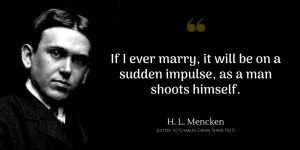The involvement of the uncertainty principle in the double slit experiment may be explained in simple terms thus:
If we don't try to determine which slit an electron passes through we obtain an interference pattern on the screen - which is what we would expect if electrons behaved like waves.
However, if we try to determine which slit an electron passes through, we are effectively measuring its position and, in accord with the uncertainty principle, we disturb the electron's momentum. Instead of seeing an interference pattern, we see two distinct bands on the screen corresponding to the two slits - which is what we would expect if electrons behaved like particles.
Hence, the double slit experiment illustrates that at the quantum level, particles can exhibit both wave-like and particle-like behavior, depending on the type of measurement performed.
If we don't try to determine which slit an electron passes through we obtain an interference pattern on the screen - which is what we would expect if electrons behaved like waves.
However, if we try to determine which slit an electron passes through, we are effectively measuring its position and, in accord with the uncertainty principle, we disturb the electron's momentum. Instead of seeing an interference pattern, we see two distinct bands on the screen corresponding to the two slits - which is what we would expect if electrons behaved like particles.
Hence, the double slit experiment illustrates that at the quantum level, particles can exhibit both wave-like and particle-like behavior, depending on the type of measurement performed.
I must admit to not really being into metaphysics, a term which translates as "post physics", i.e., "that which comes after physics".
And I certainly wouldn't wish to stray into matters religious, as such discussions are against the rules of this forum.
https://www.britannica.com/summary/metaphysics
Religion leans towards external, objective experiences, like attending church or following rituals.
Aristotle coined the word metaphysics. The prefix 'Meta' in this context means 'After', because 'Metaphysics" was his next work 'after' his book on Physics.
It doesn't necessarily mean 'beyond' or 'inferior to' physics, quite the contrary.
"Aristotle describes metaphysics as the study of "being qua being" and Descartes places metaphysics as “the root” of the tree of Philosophy.” Metaphysicians want to know what the world is like, and tend to ask questions about what sorts of things exist (e.g. are there numbers?), as well as what sorts of things are fundamental (e.g. is everything made of simple elements?). Among the more central subtopics of metaphysics are the topics of the nomological (including laws of nature and causation), the modal (including the nature of possibility), and the fundamental (including the relation between the fundamental and the derivative). Other central topics include time, the structure of objects (including human persons), and the nature of properties."
Pythagorean philosophers advanced the unshakable belief that the essence of all things are numbers and that the universe was sustained by harmony.
Pythagoras' teachings emphasized immortality of the soul and reincarnation. He taught that the concept of "number" cleared the mind and allowed for the understanding of reality.
Feynman:
“So the first thing we have to accept is that even in mathematics you can start in different places. If all these various theorems are interconnected by reasoning there is no real way to say ‘these are the most fundamental axioms’, because if you were told something different instead you could also run the reasoning the other way.”
Also worth reading:
https://www.realclearscience.com/articles/2019/06/29/richard_feynman_was_wrong_about_beauty_and_truth_in_science.html
The involvement of the uncertainty principle in the double slit experiment may be explained in simple terms thus:
...
Hence, the double slit experiment illustrates that at the quantum level, particles can exhibit both wave-like and particle-like behavior, depending on the type of measurement performed.
In conclusion: there is no such thing as “the” double slit experiment (only in historical perspective with reference to the original event in 1801 by Thomas Young at the Royal Institution, which showed that light acts as a wave).
Last edited:
Professor Brian Cox, who as I always say, is a SIMPLE MAN, explains Quantum Mechanics in ONE MINUTE:
What does this MEAN? I am eager to employ the path integral formulation....
It means that if you see the New Moon, two weeks later it is opposite in the Sky and looks like the Full Moon.
Newton would have done it this way, and he was WRONG:

The modern CORRECT explanation from Schrodinger is that it has got there with a finite chance of having taken the short cut and passed through the Earth.

Hope that clears it up.
What does this MEAN? I am eager to employ the path integral formulation....
It means that if you see the New Moon, two weeks later it is opposite in the Sky and looks like the Full Moon.
Newton would have done it this way, and he was WRONG:
The modern CORRECT explanation from Schrodinger is that it has got there with a finite chance of having taken the short cut and passed through the Earth.
Hope that clears it up.
In conclusion: there is no such thing as “the” double slit experiment (only in historical perspective with reference to the original event in 1801 by Thomas Young at the Royal Institution, which showed that light acts as a wave).
In 1961 electrons were found to exhibit wave properties in the same way as photons of light in the original Young's double slits demonstration.
The experiment involved a high energy beam of electrons impinging upon a set of slits 300 nm wide machined into copper. However, since this method couldn’t create individual electrons, it didn’t prove that each electron itself has a wave-like character.
In 1965 Richard Feynman discussed how single electrons fired at a double slit would convincingly demonstrate wave-particle duality, but it wasn't until 2013 that the first experiment of that nature was finally carried out.
This experiment involved 62 nm wide slits and a low energy beam of electrons which increased the de Broglie wavelength of the electrons compared with the earlier experiment. This allowed the physicists to use a special detector that could count single electrons.
The experiment ran continuously for two hours and, initially, the individual electrons appeared to arrive at random points on the screen. However as more and more electrons were detected, an interference pattern with bright and dark regions gradually emerged.
It is therefore this double-slit experiment, not Young’s from 1801, that physics students should be citing when they talk about wave–particle duality.
Last edited:
More on Philosophy, and it reads like Ambrose Bierce:

Everybody knew about De Broglie wave-paricle duality in the 1920s, though the Theory was immature.
G.P. Thomson's 1925 Electron Contraption, which resembles Galu's own microphonon IMO:

The photo:

What is hard about that?
Everybody knew about De Broglie wave-paricle duality in the 1920s, though the Theory was immature.
G.P. Thomson's 1925 Electron Contraption, which resembles Galu's own microphonon IMO:
The photo:
What is hard about that?
I am eager to employ the path integral formulation....
Prof Cox tells us that a quantum particle can take many paths to arrive at a particular location.
In Lagrangian mechanics, particles always move between two points along a path that involves the least "action", a word which may be regarded as representing the integral of the difference between kinetic energy and potential energy over time.
In quantum mechanics, particles can take many paths, but only those whose actions are whole-number multiples of Planck's constant.
G.P. Thomson's 1925 Electron Contraption
Electrons were accelerated towards a 10^-6 cm thick gold foil by the application of 50,000 volts between filament and foil.
The diffraction pattern of concentric rings is due to the regular arrangement of atoms in the gold foil and is similar to an X-ray diffraction pattern.
Note that the experiment did not prove the wave-particle duality of the electron.
I'll leave that topic to you to unravel then. But something wavelike, surely? 🙂
I never much liked Path Integral Formulation. The bottom line is the particle takes the path that is of least action when integrated.
This is verging on Philosophy and Interpretation, shudders, but I think the particle just goes straight on in what might be curvy space without calculation of the other paths possible.
It is fully aware of the phase of its wave function, even if we haven't a clue. The relative phase of two particles determines how they interact too, but again we can't guess.
Anyway, without further undue "prolixity" (A word I have just learned from an ancient 1890 tome called "An Elementary Treatise on Quaternions", by the esteemed P.G. Tait, condensed to 470 pages of utter bamboozlement) , I got a snap of Uranus just now from a wobbly cheap car roof. Proceeding in a regular Easterly direction again, so no-one can call it retrograde.


I leave it to the interested student to locate as an exercise.
I never much liked Path Integral Formulation. The bottom line is the particle takes the path that is of least action when integrated.
This is verging on Philosophy and Interpretation, shudders, but I think the particle just goes straight on in what might be curvy space without calculation of the other paths possible.
It is fully aware of the phase of its wave function, even if we haven't a clue. The relative phase of two particles determines how they interact too, but again we can't guess.
Anyway, without further undue "prolixity" (A word I have just learned from an ancient 1890 tome called "An Elementary Treatise on Quaternions", by the esteemed P.G. Tait, condensed to 470 pages of utter bamboozlement) , I got a snap of Uranus just now from a wobbly cheap car roof. Proceeding in a regular Easterly direction again, so no-one can call it retrograde.
I leave it to the interested student to locate as an exercise.
I'll leave that topic to you to unravel then.
I already did in post # 5,487!
but I think the particle just goes straight on in what might be curvy space without calculation of the other paths possible.
Doesn't a quantum particle follow all of the possible paths at once?
I've read we can think of the path integral as stating that a quantum particle samples 'all possible paths'.
Or should we invoke Fermat's principle which says that, out of all possible paths that it might take to get from one point to another, a photon takes the path which requires the shortest time?
Last edited:
It's all historical rubbish anyway. Like Special Relativity, I am convinced of the Reality of it. No need for clocks, mirrors and torches and obeservers called Anne, Barbara and Carol.
But you raise something that puzzles me. If Light takes the shortest time, surely matter takes the longest time. I read that somewhere. This seems interesting.
You know, the Twin Paradox, which is not a Paradox at all.
The Brother who proceeds through SpaceTime unaccelerated at home, ages quicker than the one off to the stars and back in a rocket.
I shall ponder this too.
But you raise something that puzzles me. If Light takes the shortest time, surely matter takes the longest time. I read that somewhere. This seems interesting.
You know, the Twin Paradox, which is not a Paradox at all.
The Brother who proceeds through SpaceTime unaccelerated at home, ages quicker than the one off to the stars and back in a rocket.
I shall ponder this too.
I have introduced a confusion!
Fermat's principle says that light waves of a given frequency traverse the path between two points which takes the least time.
This provides an alternative approach to geometric optics and I should not have mentioned photons.
It's explained here in HyperPhysics which is a safe site: http://hyperphysics.phy-astr.gsu.edu/hbase/phyopt/Fermat.html
Fermat's principle says that light waves of a given frequency traverse the path between two points which takes the least time.
This provides an alternative approach to geometric optics and I should not have mentioned photons.
It's explained here in HyperPhysics which is a safe site: http://hyperphysics.phy-astr.gsu.edu/hbase/phyopt/Fermat.html
H.L. Mencken, as a 'messenger' is worth gold.
This particular quote is mediocre, if not one of his worst.
It's somewhat reminiscent of the concept of dark matter > it isn't dark and it doesn't matter.
Mencken also wrote this:

Only to get married just three years later.
So we shouldn't take anyone's words for granted (including mine, of course).
Mencken was a great admirer of Friedrich Nietzsche - a philosopher who, like few others, fits the quote.
For about 25 years I considered myself a Nietzsche adept, until recently.
A modern-day equivalent:

It's explained here in HyperPhysics which is a safe site: http://hyperphysics.phy-astr.gsu.edu/hbase/phyopt/Fermat.html
Safe???

😉
Last edited:
Roland, stop multiple posting your pointless Philosophical musings! It is as welcome as a pork sausage in a synagogue here.
We are Scientists seeking the simplest possible explanations of the physical world. 🙁
I have found out what is wrong with smug, patronising, droning Brian Cox's pisspoor explanation of the Feynman Path Integral Formulation:

The electron isn't wandering and wiggling all over the shop. It is "simultaneously" taking only two straightish paths to the slits.
I know how to do this with a diffraction grating, but here it is just a sum of two path interfering to where it is fairly randomly detected. Easy enough.
There is some subtlety about actual path and time in Physics, expressed as The Principle of Maximum Proper Time, and it can explain why a cricket ball follows a parabola:
But we can leave that one alone. The bleeding obvious, IMO.
I still think about Gravity quite a lot. If Newton had realised the mistake he made with Gravity being assumed instantaneous rather than moving at the speed of light, and he might have, would he have got near Einstein's Gravity Theory?
Like Sommerfeld adding Lorentz Covariance (Special Relativity) to Bohr's atom? 🤔
Last of my musings, which I owe to sensible Jim Al-Khalili rather than idiot Brian Cox:
Do you remember when Jim got a bee in his bonnet about understanding time dilation? I think he even talked to Kip Thorne, and tried things with his GPS tracker on his phone.
He found out that clocks at sea level anywhere on the globe all run at the same rate, despite the Earth spinning and not being round? I thought that was an amazing simplification of a fierce calculation.
He also decided that Gravity means things gravitate to the regions where time runs slower. That's it. All you need to know! 😎
We are Scientists seeking the simplest possible explanations of the physical world. 🙁
I have found out what is wrong with smug, patronising, droning Brian Cox's pisspoor explanation of the Feynman Path Integral Formulation:
The electron isn't wandering and wiggling all over the shop. It is "simultaneously" taking only two straightish paths to the slits.
I know how to do this with a diffraction grating, but here it is just a sum of two path interfering to where it is fairly randomly detected. Easy enough.
There is some subtlety about actual path and time in Physics, expressed as The Principle of Maximum Proper Time, and it can explain why a cricket ball follows a parabola:
Principle of maximum proper time: If no force is acting on a body, it moves from X to Y through space-time along a path for which the ratio Δτ / Δt is maximized.
But we can leave that one alone. The bleeding obvious, IMO.
I still think about Gravity quite a lot. If Newton had realised the mistake he made with Gravity being assumed instantaneous rather than moving at the speed of light, and he might have, would he have got near Einstein's Gravity Theory?
Like Sommerfeld adding Lorentz Covariance (Special Relativity) to Bohr's atom? 🤔
Last of my musings, which I owe to sensible Jim Al-Khalili rather than idiot Brian Cox:
Do you remember when Jim got a bee in his bonnet about understanding time dilation? I think he even talked to Kip Thorne, and tried things with his GPS tracker on his phone.
He found out that clocks at sea level anywhere on the globe all run at the same rate, despite the Earth spinning and not being round? I thought that was an amazing simplification of a fierce calculation.
He also decided that Gravity means things gravitate to the regions where time runs slower. That's it. All you need to know! 😎
Words are (by definition) destructive, but I think I know what you're getting at.Shouldn't it means 'the physics of physics' ?
//
'Intelligence' might also be appropriate.
Analysis (measurement) = conflict
Nevertheless...

This animation shows the spatial probability density of finding an electron in a hydrogen atom. The Hydrogen wavefunctions transitioning between states with different quantum numbers 𝒏,𝒍,𝒎. The quantum numbers 𝒏,𝒍,𝒎 are the parameters which specify the state of the hydrogen atom:
• 𝒏: total energy
• 𝒍: total angular momentum
• 𝒎: z-component of angular momentum
Each transition shows a state α|𝒏𝒍𝒎⟩ + β|𝒏’𝒍’𝒎’⟩, where α decreases and β increases. Dots represent the values of 𝒏𝒍𝒎, and the solid lines show possible allowed values.
Last edited:
- Home
- Member Areas
- The Lounge
- Does this explain what generates gravity?